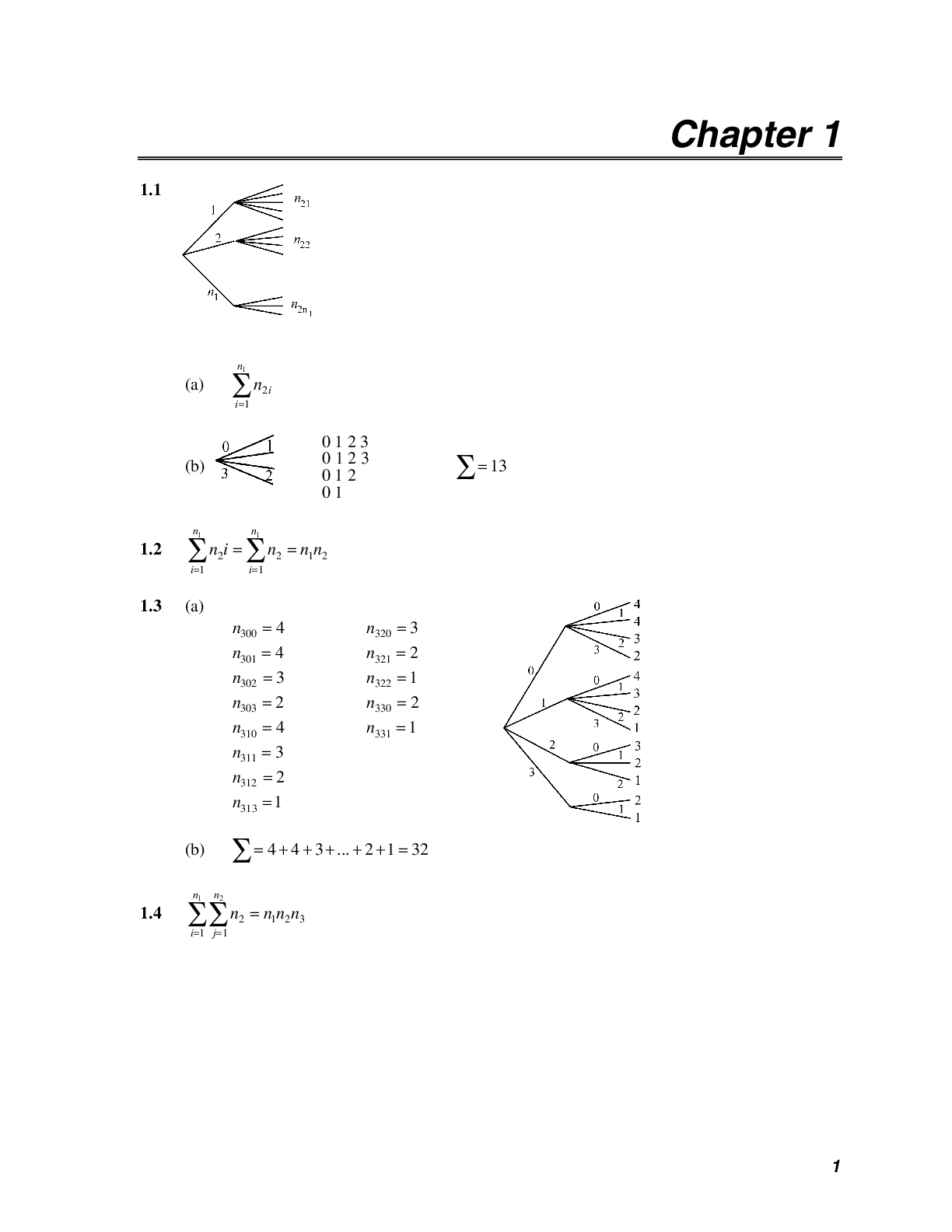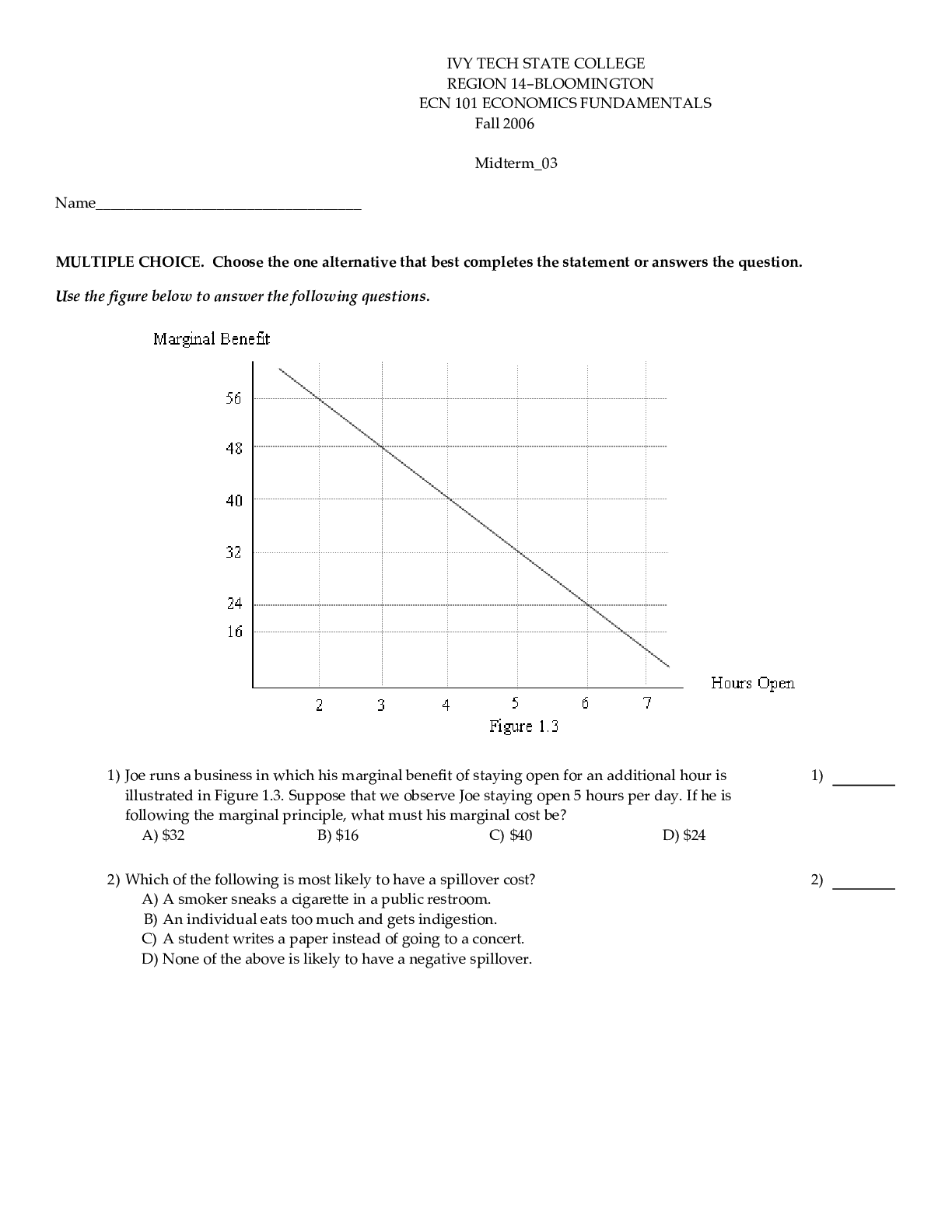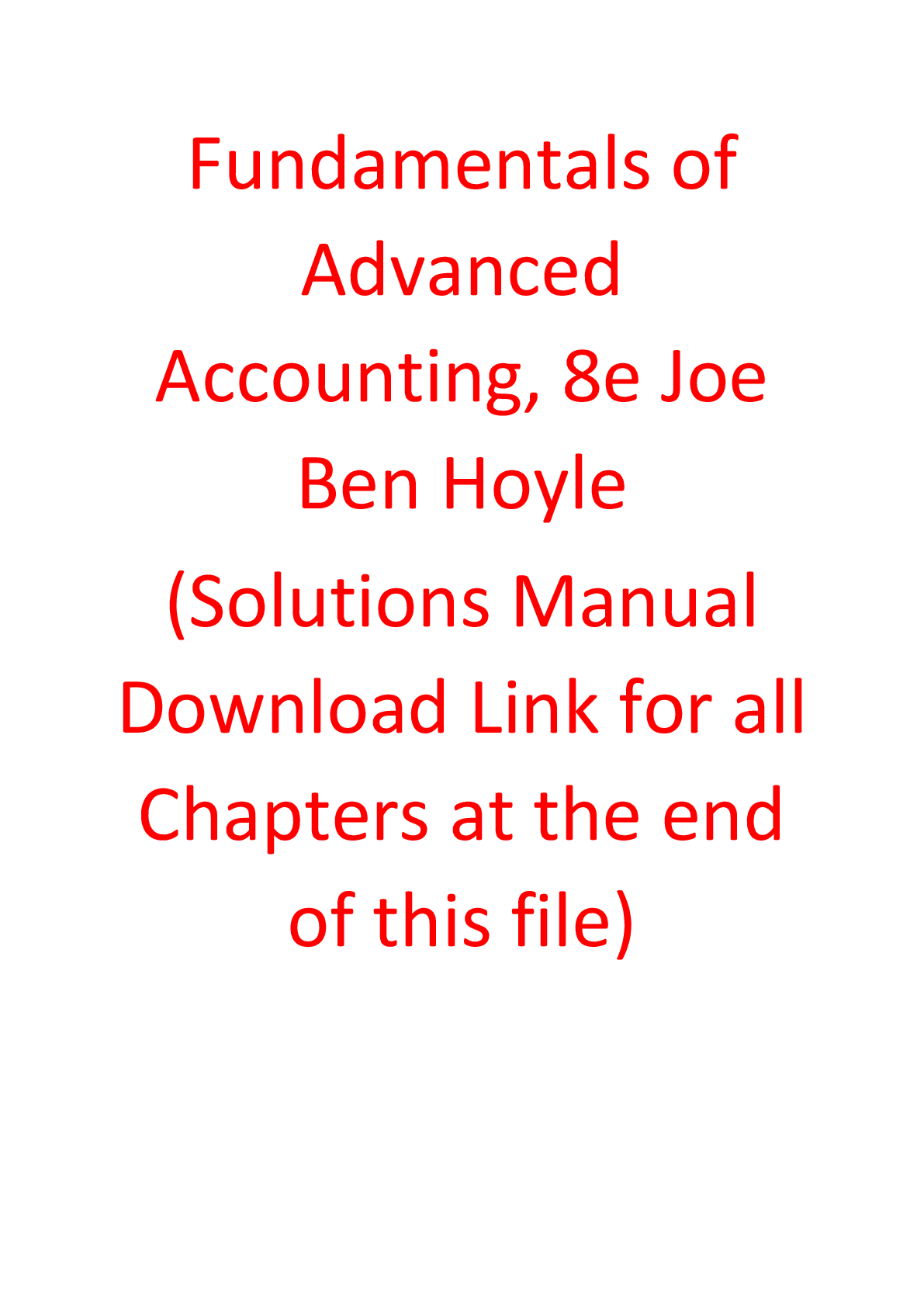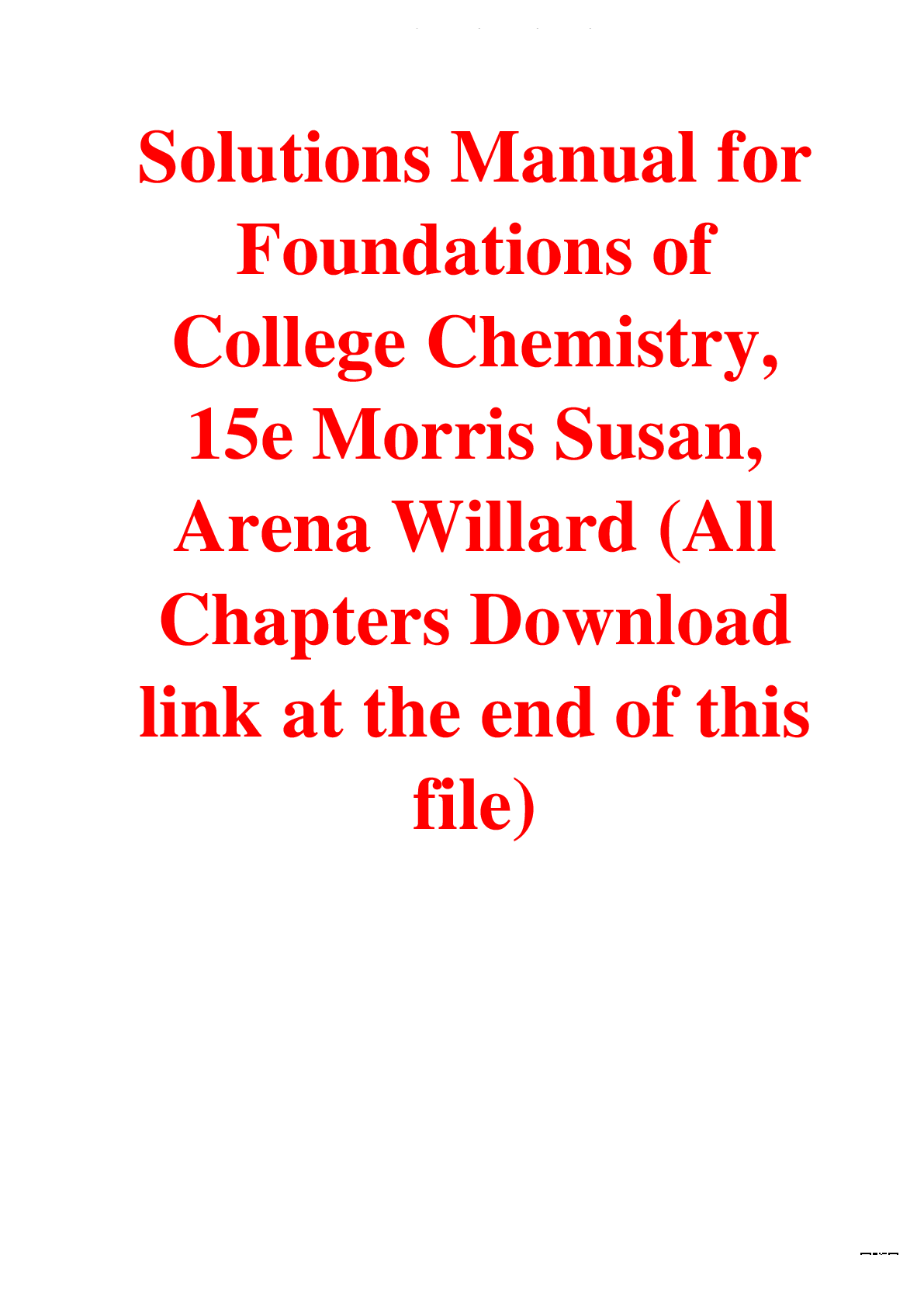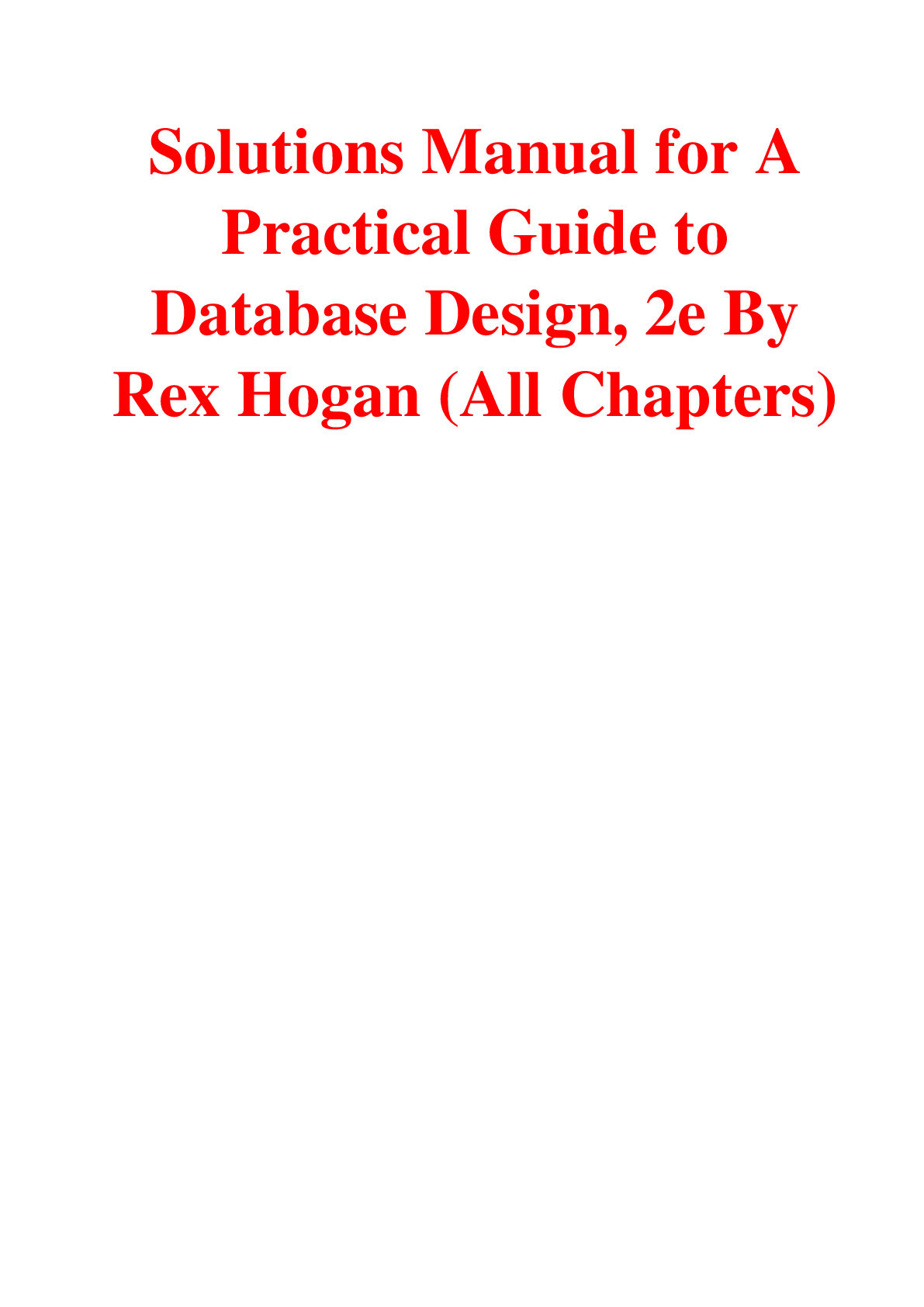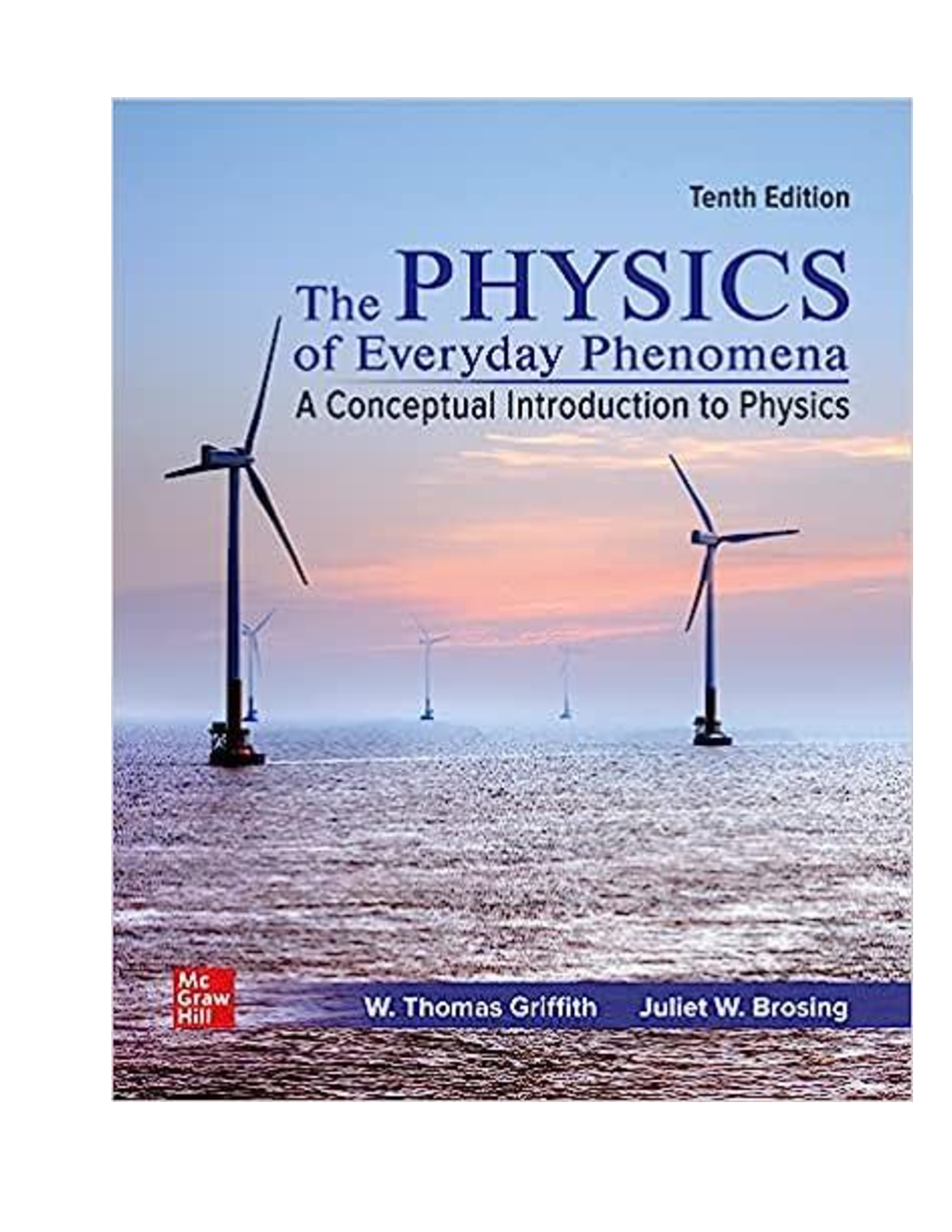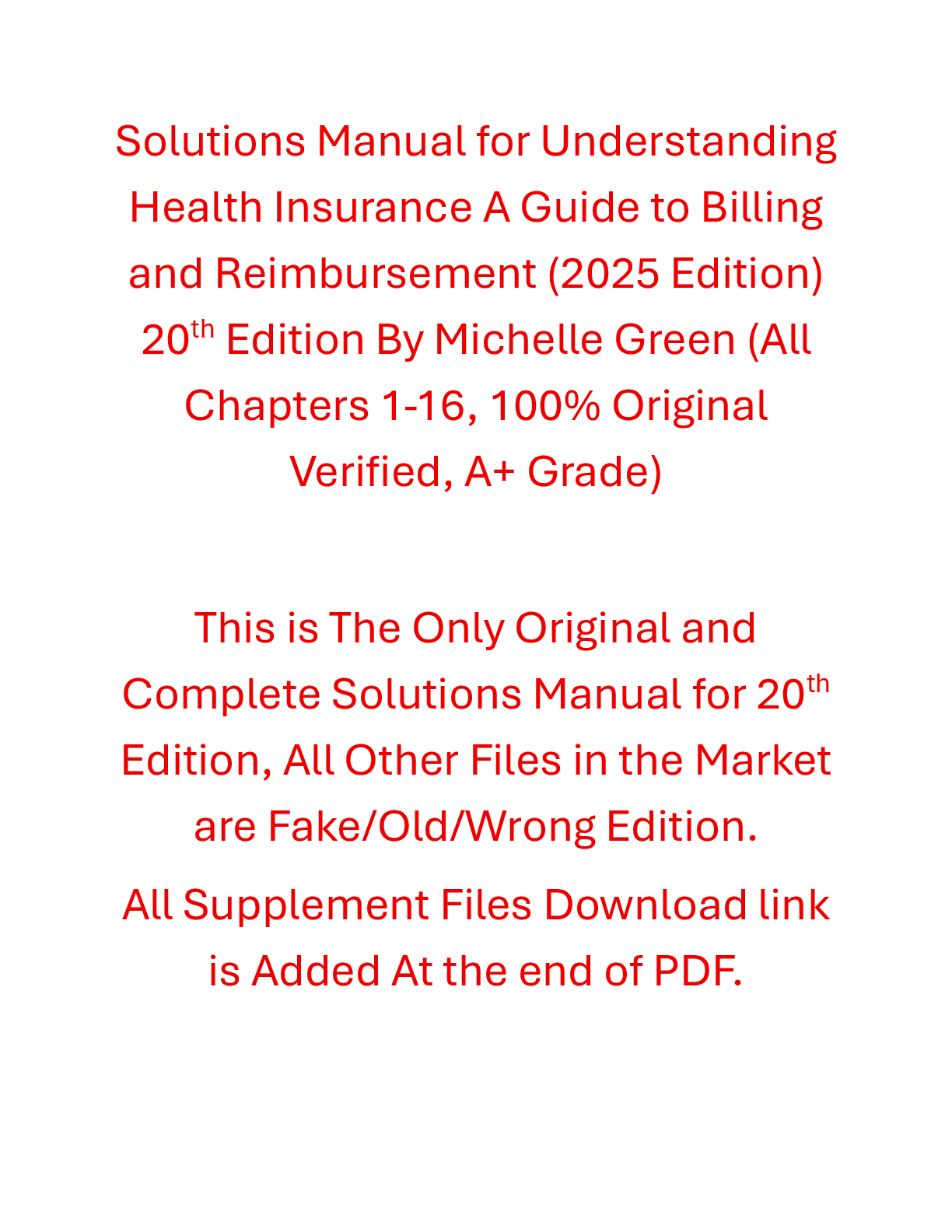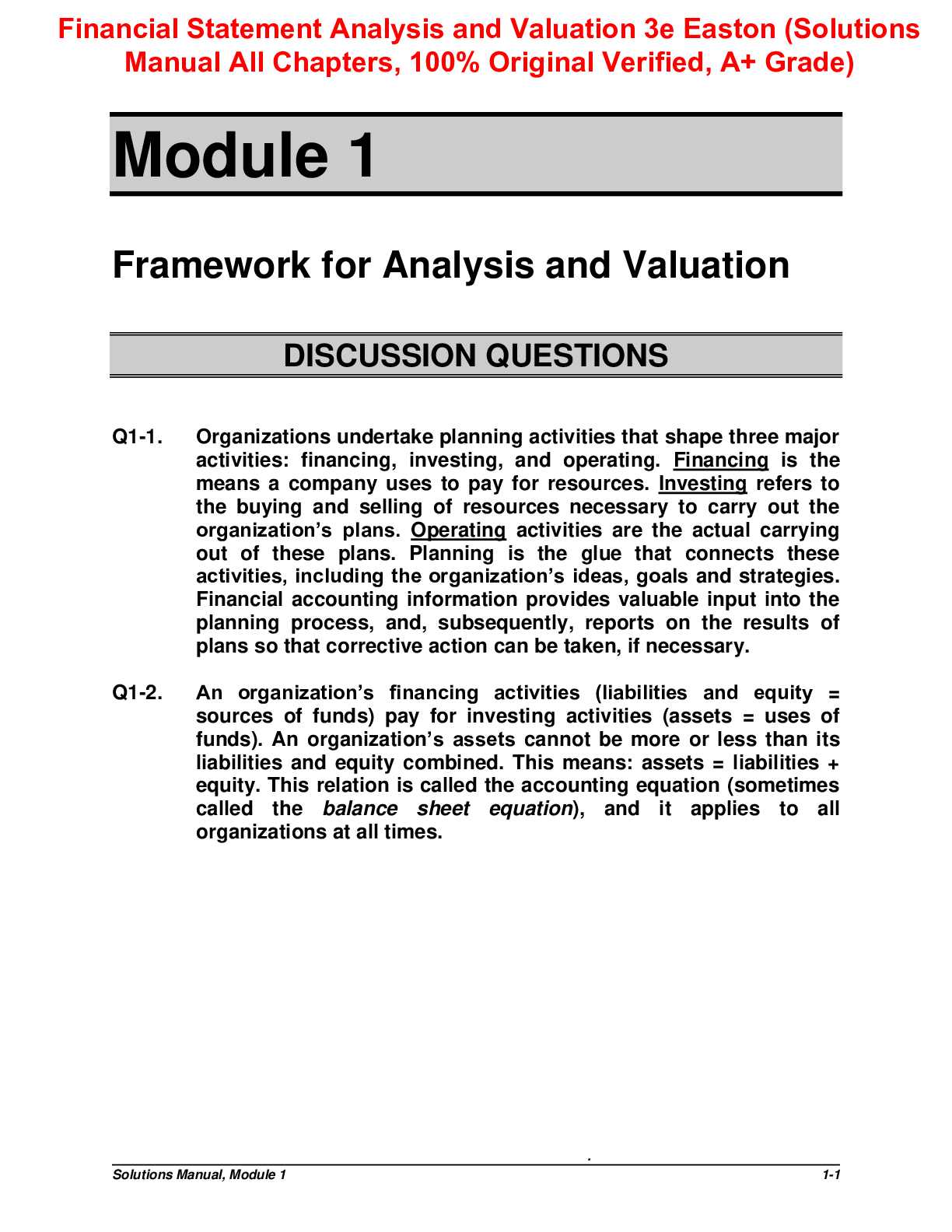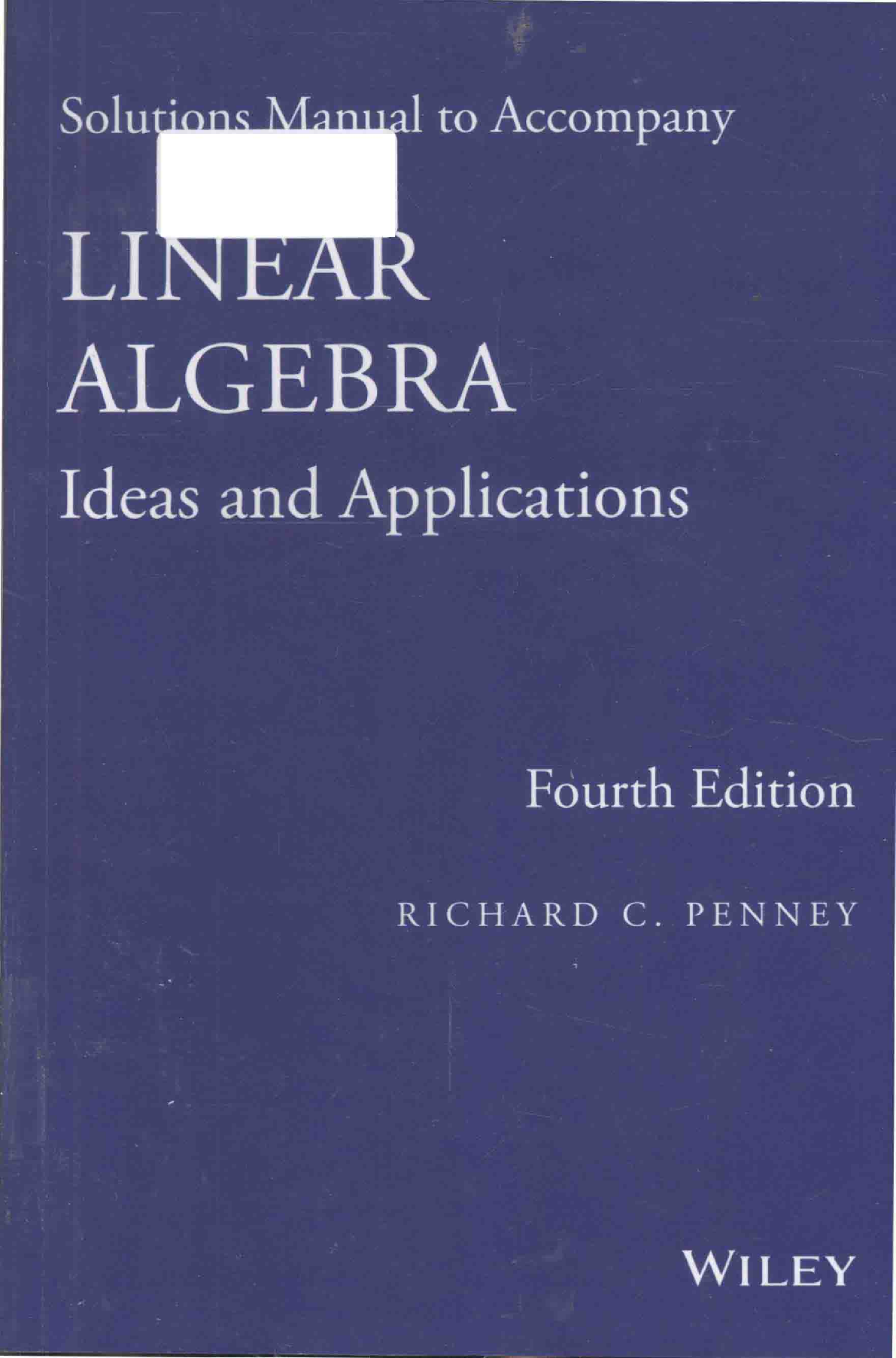ACC 321 HORN_Ch11 DECISION MAKING AND RELEVANT INFORMATION _QUESTIONS AND SOLUTIONS-ALL 100% CORRECT
Document Content and Description Below
CHAPTER 11
DECISION MAKING AND RELEVANT INFORMATION
11-1 Outline the five-step sequence in a decision process.
The five steps in the decision process outlined in Exhibit 11-1 of the text are
1. Id
...
entify the problem and uncertainties.
2. Obtain information.
3. Make predictions about the future.
4. Make decisions by choosing among alternatives.
5. Implement the decision, evaluate performance, and learn.
11-2 Define relevant costs. Why are historical costs irrelevant?
Relevant costs are expected future costs that differ among the alternative courses of action being
considered. Historical costs are irrelevant because they are past costs and, therefore, cannot differ
among alternative future courses of action.
11-3 “All future costs are relevant.” Do you agree? Why?
No. Relevant costs are defined as those expected future costs that differ among alternative
courses of action being considered. Thus, future costs that do not differ among the alternatives
are irrelevant to deciding which alternative to choose.
11-4 Distinguish between quantitative and qualitative factors in decision making.
Quantitative factors are outcomes that are measured in numerical terms. Some quantitative
factors are financial––that is, they can be easily expressed in monetary terms. Direct materials
are an example of a quantitative financial factor. Other quantitative nonfinancial factors, such as
on-time flight arrivals, cannot be easily expressed in monetary terms. Qualitative factors are
outcomes that are difficult to measure accurately in numerical terms. An example is employee
morale.
11-5 Describe two potential problems that should be avoided in relevant-cost analysis.
Two potential problems that should be avoided in relevant cost analysis are
(i) Do not assume all variable costs are relevant and all fixed costs are irrelevant.
(ii) Do not use unit-cost data directly. It can mislead decision makers because
a. it may include irrelevant costs, and
b. comparisons of unit costs computed at different output levels lead to erroneous
conclusions.
11-6 “Variable costs are always relevant, and fixed costs are always irrelevant.” Do you
agree? Why?
No. Some variable costs may not differ among the alternatives under consideration and, hence,
will be irrelevant. Some fixed costs may differ among the alternatives and, hence, will be
relevant.
11-7 “A component part should be purchased whenever the purchase price is less than its total
manufacturing cost per unit.” Do you agree? Why?
11-1No. Some of the total manufacturing cost per unit of a product may be fixed and, hence, will not
differ between the make and buy alternatives. These fixed costs are irrelevant to the make-or-buy
decision. The key comparison is between purchase costs and the costs that will be saved if the
company purchases the component parts from outside plus the additional benefits of using the
resources freed up in the next best alternative use (opportunity cost). Furthermore, managers
should consider nonfinancial factors such as quality and timely delivery when making
outsourcing decisions.
11-8 Define opportunity cost.
Opportunity cost is the contribution to income that is forgone (rejected) by not using a limited
resource in its next-best alternative use.
11-9 “Managers should always buy inventory in quantities that result in the lowest purchase
cost per unit.” Do you agree? Why?
No. When deciding on the quantity of inventory to buy, managers must consider both the
purchase cost per unit and the opportunity cost of funds invested in the inventory. For example,
the purchase cost per unit may be low when the quantity of inventory purchased is large, but the
benefit of the lower cost may be more than offset by the high opportunity cost of the funds
invested in acquiring and holding inventory.
11-10 “Management should always maximize sales of the product with the highest contribution
margin per unit.” Do you agree? Why?
No. Managers should aim to get the highest contribution margin per unit of the constraining (that
is, scarce, limiting, or critical) factor. The constraining factor is what restricts or limits the
production or sale of a given product (for example, availability of machine-hours).
11-11 “A branch office or business segment that shows negative operating income should be
shut down.” Do you agree? Explain briefly.
No. For example, if the revenues that will be lost exceed the costs that will be saved, the branch
or business segment should not be shut down. Shutting down will only increase the loss.
Allocated costs and fixed costs that will not be saved are irrelevant to the shut-down decision.
11-12 “Cost written off as depreciation on equipment already purchased is always irrelevant.”
Do you agree? Why?
Cost written off as depreciation is irrelevant when it pertains to a past cost such as equipment
already purchased. But the purchase cost of new equipment to be acquired in the future that will
then be written off as depreciation is often relevant.
11-13 “Managers will always choose the alternative that maximizes operating income or
minimizes costs in the decision model.” Do you agree? Why?
No. Managers often favor the alternative that makes their performance look best so they focus on
the measures used in the performance-evaluation model. If the performance-evaluation model
11-2does not emphasize maximizing operating income or minimizing costs, managers will most
likely not choose the alternative that maximizes operating income or minimizes costs.
11-14 Describe the three steps in solving a linear programming problem.
The three steps in solving a linear programming problem are
(i) Determine the objective function.
(ii) Specify the constraints.
(iii) Compute the optimal solution.
11-15 How might the optimal solution of a linear programming problem be determined?
The text outlines two methods of determining the optimal solution to an LP problem:
(i) Trial-and-error approach
(ii) Graphic approach
Most LP applications in practice use standard software packages that rely on the simplex method
to compute the optimal solution.
11-16 Qualitative and quantitative factors. Which of the following is not a qualitative factor
that Atlas Manufacturing should consider when deciding whether to buy or make a part used in
manufacturing their product?
a. Quality of the outside producer’s product.
b. Potential loss of trade secrets.
c. Manufacturing deadlines and special orders.
d. Variable cost per unit of the product.
SOLUTION
Choice "d" is correct. Calculating the costs of production of the part versus buying the part from an
outside source is a quantitative factor used by a company to determine the lowest cost alternative.
Choice "a" is incorrect. Whether the outsourced part can be manufactured to the required level of quality
is a qualitative factor that Atlas would consider in their decision. Choice "b" is incorrect. Loss of
confidentiality and trade secrets is a qualitative factor to consider when buying outside of the
organization. Choice "c" is incorrect. An outside supplier may not be able to meet specific deadlines or
have the same priorities as the purchaser and is a qualitative factor that needs to be considered.
11-17 Special order, opportunity cost. Chade Corp. is considering a special order brought to it
by a new client. If Chade determines the variable cost to be $9 per unit, and the contribution
margin of the next best alternative of the facility to be $5 per unit, then if Chade has:
a. Full capacity, the company will be profitable at $4 per unit.
b. Excess capacity, the company will be profitable at $6 per unit.
11-3c. Full capacity, the selling price must be greater than $5 per unit.
d. Excess capacity, the selling price must be greater than $9 per unit.
SOLUTION
Choice "d" is correct. At excess capacity, Chade will accept the special order as long as the sales price is
greater than the variable cost per unit. At $9 per unit for variable cost, Chade will accept the special order
at a sales price greater than $9 per unit. Choice "a" is incorrect. At full capacity, Chade will accept the
special order as long as the sales price is greater than both the variable cost per unit and the opportunity
cost (contribution margin) of the next best alternative per unit. The company will not be profitable in this
scenario unless the sales price is greater than $14 per unit ($9 variable cost + $5 contribution margin).
Choice "b" is incorrect. At excess capacity, the company must receive a selling price greater than $9 per
unit in order to be profitable. Choice "c" is incorrect. At full capacity, the selling price must be greater
than $14 per unit in order for the special order to be profitable.
11-18 Special order, opportunity cost. In order to determine whether a special order should be
accepted at full capacity, the sales price of the special order must be compared to the per unit:
a. Contribution margin of the special order.
b. Variable cost and contribution margin of the special order.
c. Variable cost and contribution margin of the next best alternative.
d. Variable cost of current production and the contribution margin of the next best alternative.
SOLUTION
Choice "d" is correct. If the selling price is greater than the variable cost per unit of the special order (at
full capacity) plus the contribution margin per unit of the next best alternative (the opportunity cost),
then the company will accept the special order. Choice "a" is incorrect. Variable costs have to be taken
into account, in addition to the contribution margin of the next best alternative. Choice "b" is incorrect.
The contribution margin of the next best alternative (rather than the special order) must be taken into
account in order to determine whether to accept the special order. Choice "c" is incorrect. The variable
costs of the special order (not the next best alternative) must be accounted for in this determination.
11-19 Keep or drop a business segment. Lees Corp. is deciding whether to keep or drop a
small segment of its business. Key information regarding the segment includes:
Contribution margin: 35,000
Avoidable fixed costs: 30,000
Unavoidable fixed costs: 25,000
Given the information above, Lees should:
a. Drop the segment because the contribution margin is less than total fixed costs.
b. Drop the segment because avoidable fixed costs exceed unavoidable fixed costs.
c. Keep the segment because the contribution margin exceeds avoidable fixed costs.
d. Keep the segment because the contribution margin exceeds unavoidable fixed costs.
SOLUTION
Choice "c" is correct. Whether to keep or drop a segment will depend on whether the contribution
margin of the segment in question exceeds avoidable fixed costs (relevant costs that wouldn’t exist if the
11-4
[Show More]
Last updated: 2 years ago
Preview 1 out of 66 pages
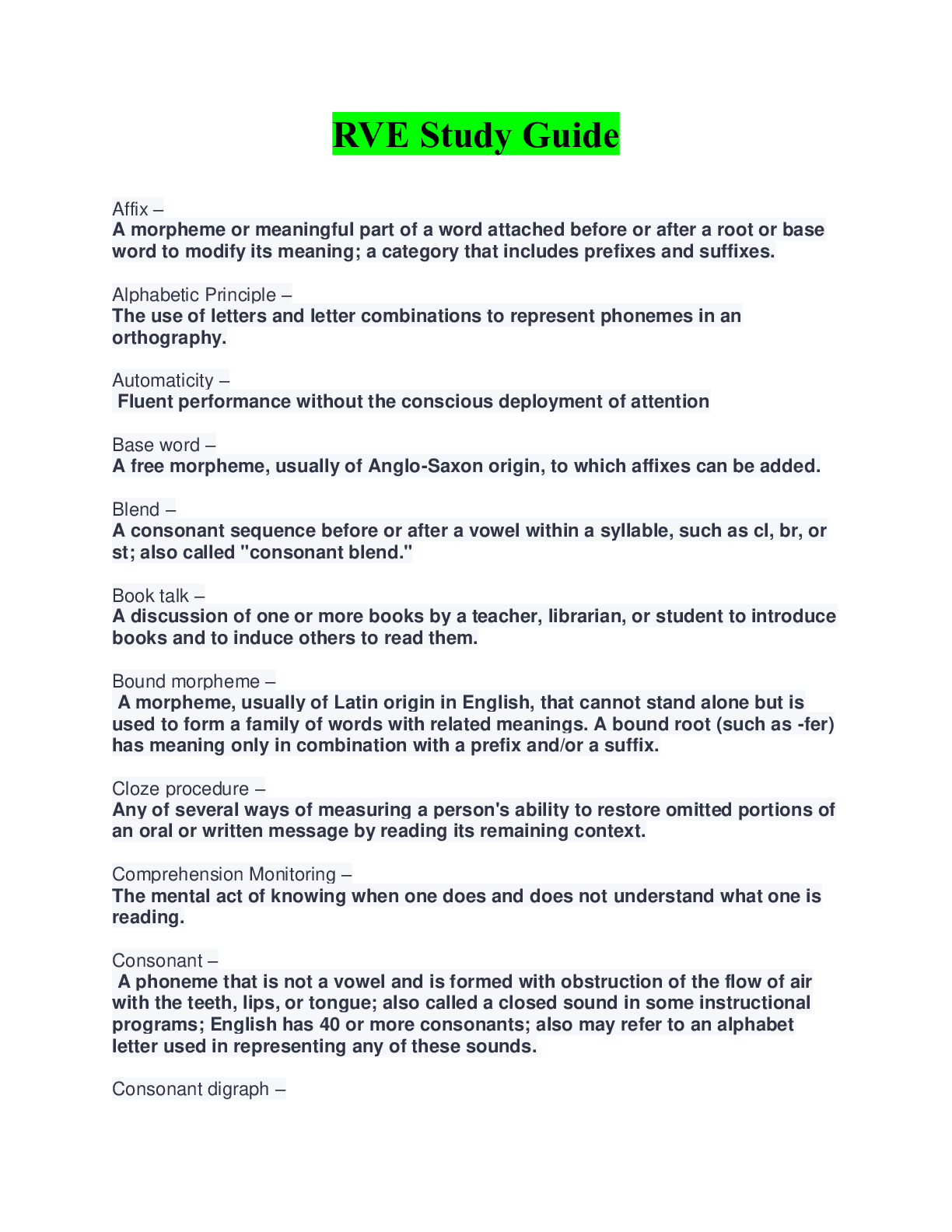
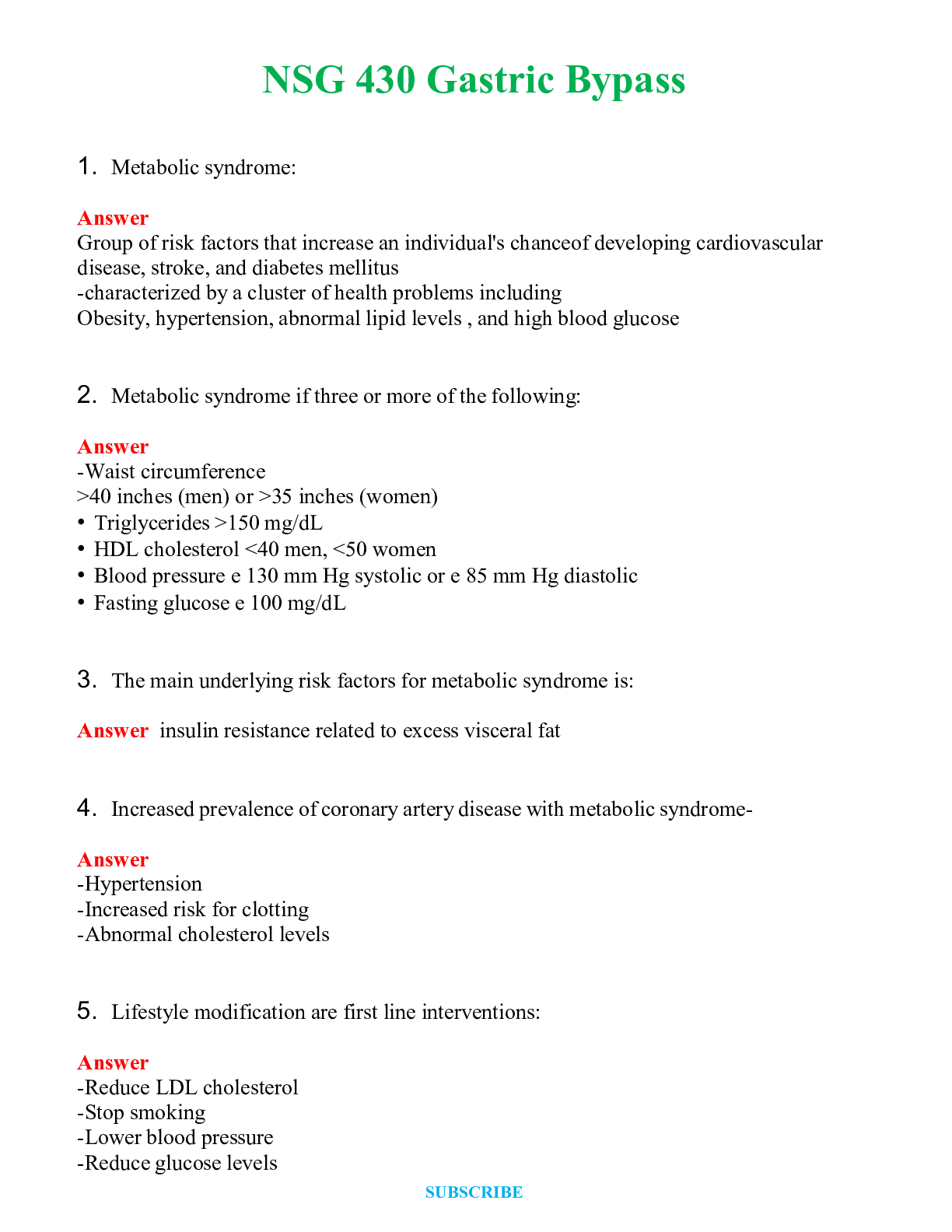

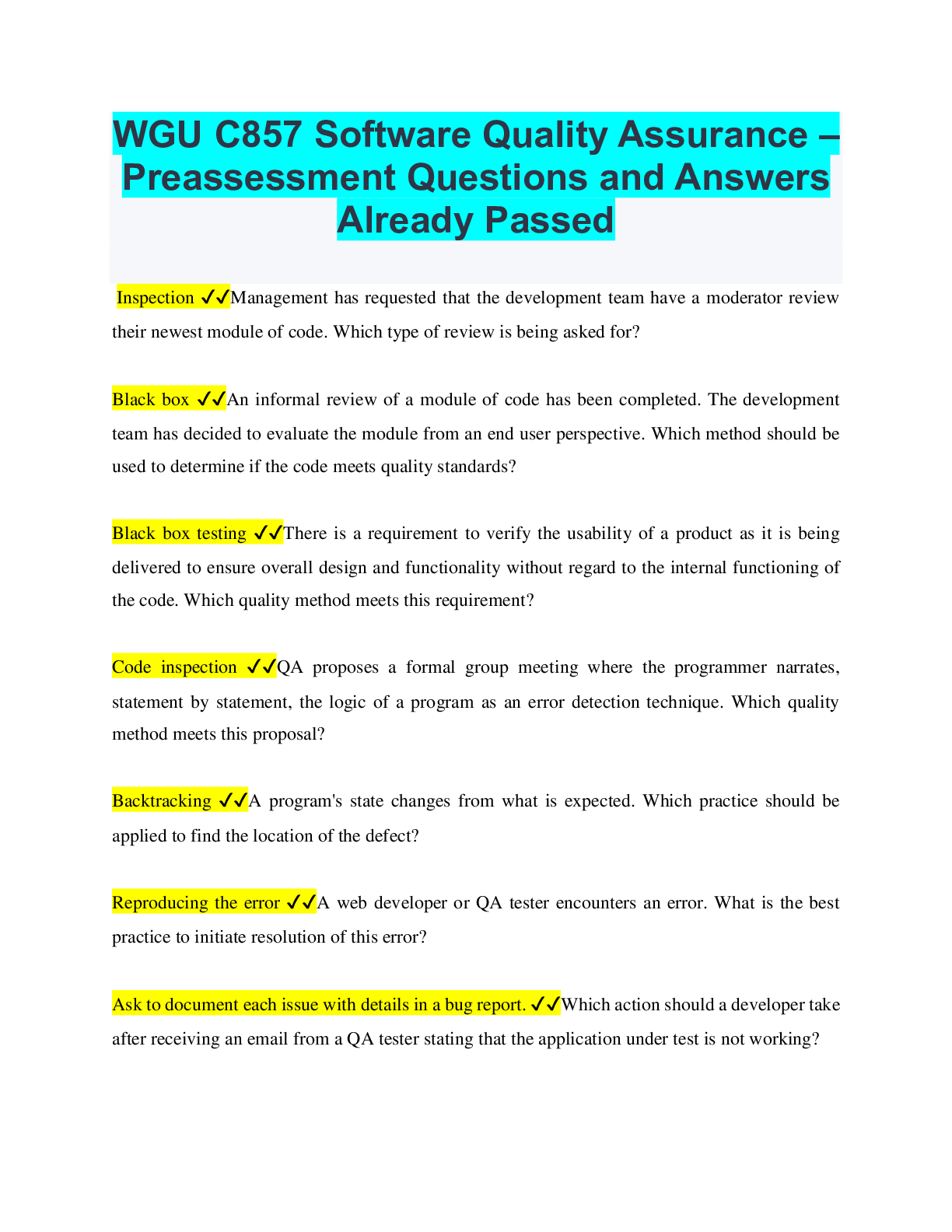
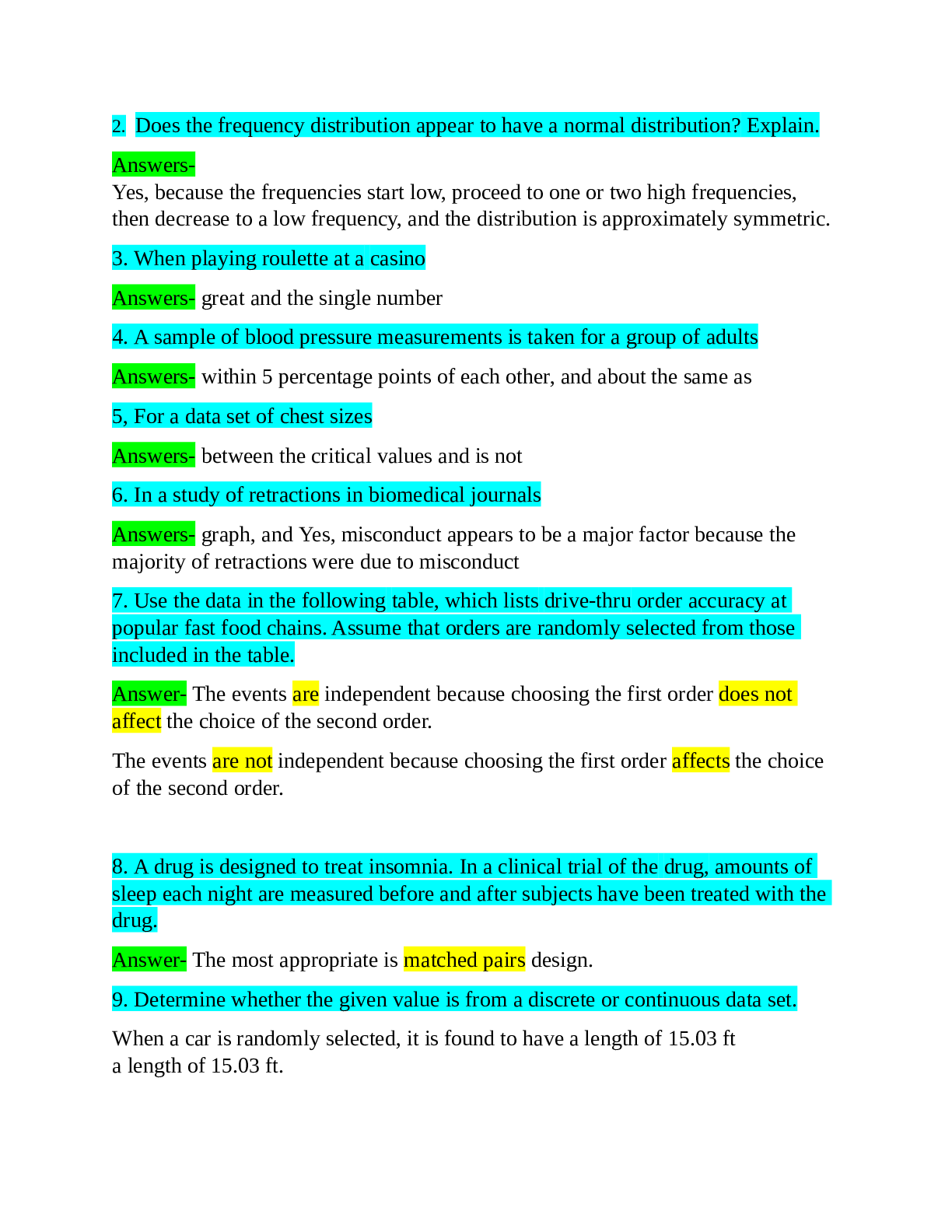
.png)

.png)



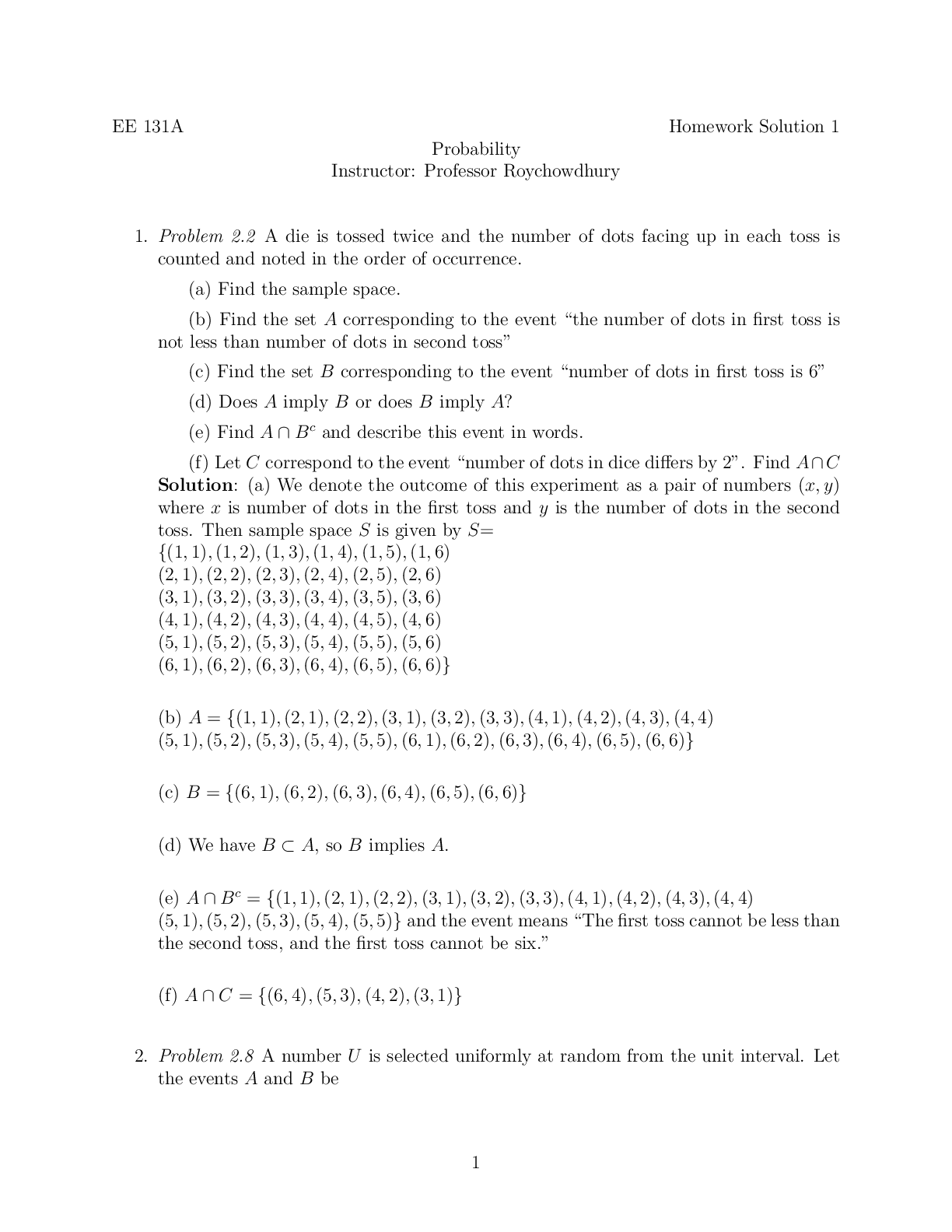




.png)

